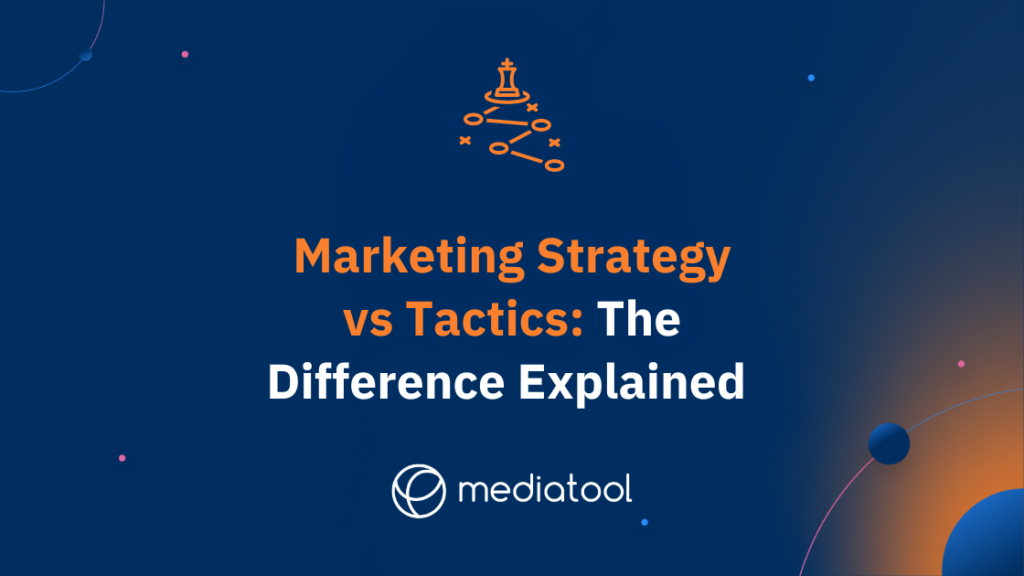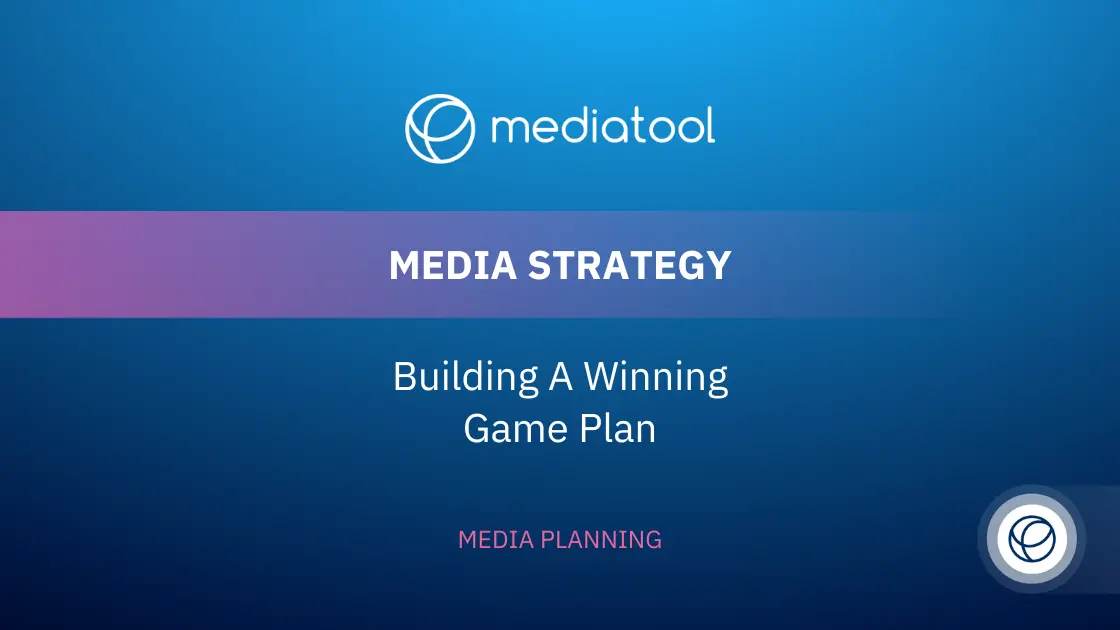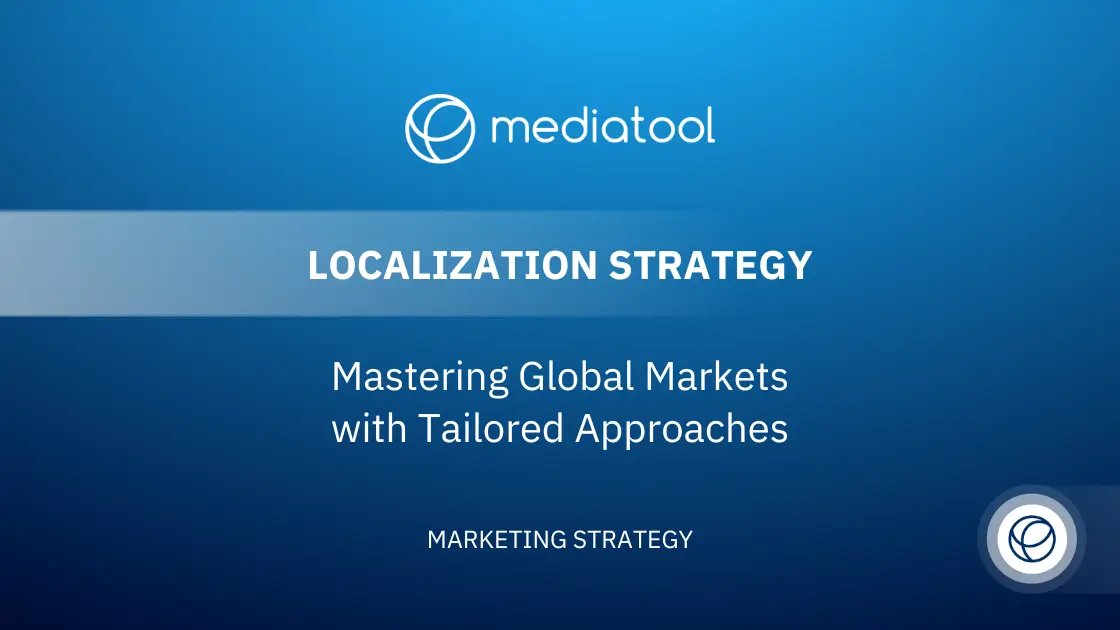The words strategy and tactics are often used interchangeably. But while the two words may share similar meanings they do indeed mean very different things, especially in marketing.
Many marketers have a goal, but they often lack an overall marketing strategy for achieving it. As a result they go straight from goal to tactics and completely miss out on the strategy in between. When this happens, expect results like the below:
- A monthly newsletter with a high unsubscribe rate and a low click through rate.
- A brand increases its Google Ads spend but it doesn’t increase e-commerce sales.
- A SaaS brand publishes regular blog content but fails to generate conversions from it.
Put simply, there is a clear order that your marketing strategy and its tactics has to follow to achieve your goals. If the above examples seem familiar, don’t fret: read on to explore the difference between strategy and tactics and—most importantly—how they work together to get the results you need.
A quick note on marketing goals
Before diving into strategies and tactics, it’s essential not to get goals confused with strategies. A goal is aspirational and singular: “we want to increase site traffic” and “we want more engagement on social media” are both marketing goals, while “we want to be the number one brand in our industry” is a business goal.
These goals say a lot about what you hope the outcome will be, but they say nothing about how you’ll make it happen. In fact, many so-called strategies are actually just goals according to The Harvard Business School.
Use a marketing strategy that aligns your business and marketing goals to help see how they add commercial value to your business.
The difference between marketing strategies and marketing tactics
Strategy vs Tactics
A marketing strategy lays out a clear set of choices that define what you’re going to do (as well as what you’re not going to do). Put together, these choices form a clear strategic direction for your marketing.
Let’s look at it another way; your marketing strategy is your game plan. It lays out how you’re going to reach your target audience and engage them. Plus, it shows your efforts will contribute to reaching your marketing (and business) goals.
Having a marketing plan is key!
Now we need to define tactics…
Marketing tactics are the specific activities you use to execute your strategy. Digital marketing strategies have potentially hundreds of tactics such as posting curated content on social media, publishing blogs to increase website visibility, using backlinks to improve search engine ranking, and a Facebook ads campaign that targets specific buyer personas. You can even have tactics within tactics (a website or brand refresh is made up of several smaller tactics to tweak and enhance the final result). But all these marketing tactics fall under the umbrella of a single marketing strategy.
In other words, a marketing goal is where you specifically want to get to and a business goal is what you hope to achieve when you get there. Your marketing strategy is your map and your tactics are the bits of kit you use to reach your destination.
Among all the various marketing tactics you’ll use, make sure they all fall under the umbrella of your marketing strategy and contribute to getting you that bit closer to your goal.
How marketing strategies and marketing tactics work together to achieve a single goal
As you can see, marketing strategies and tactics don’t oppose each other. In fact, they’re interdependent and have to complement one another for successful marketing.
Always start with your strategy and then add the tactics you need to get it underway. Let’s look at how they’re intertwined to reach a goal:
Strategy: complete digital rebrand
Marketing tactics:
- Redesign key brand elements e.g. logo, color scheme, fonts, etc.
- Rethink and overhaul UX
- Launch refreshed website that includes the above
- Contributes to goal: appeal to a modern audience
Strategy: improve inbound marketing
Marketing tactics:
- Target relevant keywords to improve inbound traffic
- Use a lead magnet to capture emails
- Nurture leads with an email drip campaign
- Contributes to goal: lower cost per lead over time
Strategy: engage target audience using a multichannel campaign
Marketing tactics:
- Use online advertising including social media, paid search, and display ads
- Use a TV commercial to complement online campaign and increase reach
- Employ social media marketing to drive engagement beyond the ads’ run schedule
- Contributes to goal: launch a new product line
Multichannel marketing campaigns like these often hold the key to effective marketing. But, they can be a real challenge to effectively manage and coordinate. Have the right tool by your side to track, analyze, and optimize your campaign to give your brand the best chance for success.
Understand the link between marketing strategy, tactics, and goals for real success
Understanding marketing strategy, tactics, goals, and how they link up is the first step to launching a marketing campaign that has real commercial value. Always remember to build a marketing strategy around your marketing goals, and build your marketing goals around business goals. Then, introduce the tactics you need to execute your strategy and achieve your goal.
If you’re running complex multichannel campaigns with many moving parts, read our useful article about how to develop an effective integrated marketing campaign.
Remember this is not a top-down process. People at every level will have ideas and observations that can contribute to the success of your marketing strategy. It’s vital to have open communication channels and systems to receive feedback and optimize your tactics during your marketing journey.
Linking the results of your tactics to the effectiveness of your marketing strategy can be tricky and this is exactly why we created Mediatool: so that you can track the progress of your entire marketing campaign in one place.
Book a free Mediatool demo today and see for yourself how to use your media data like a pro to achieve your goals!





